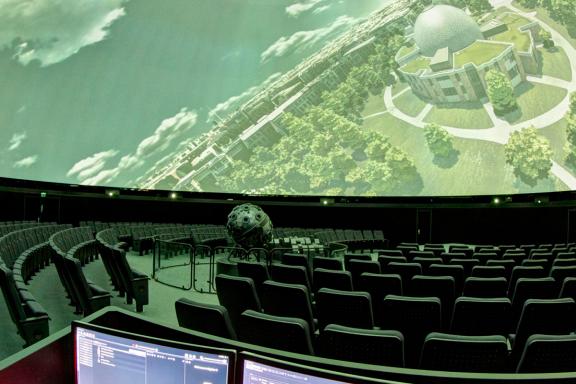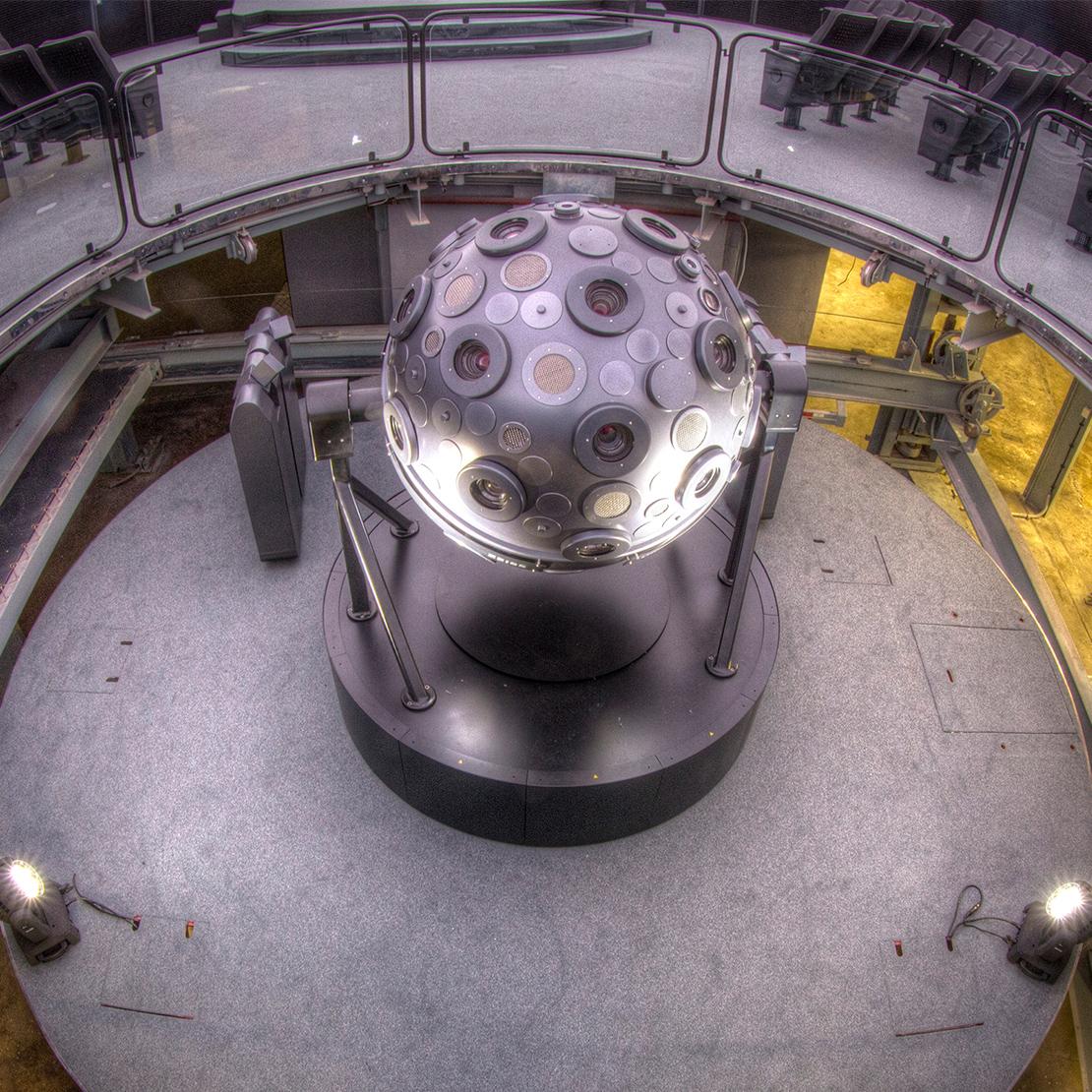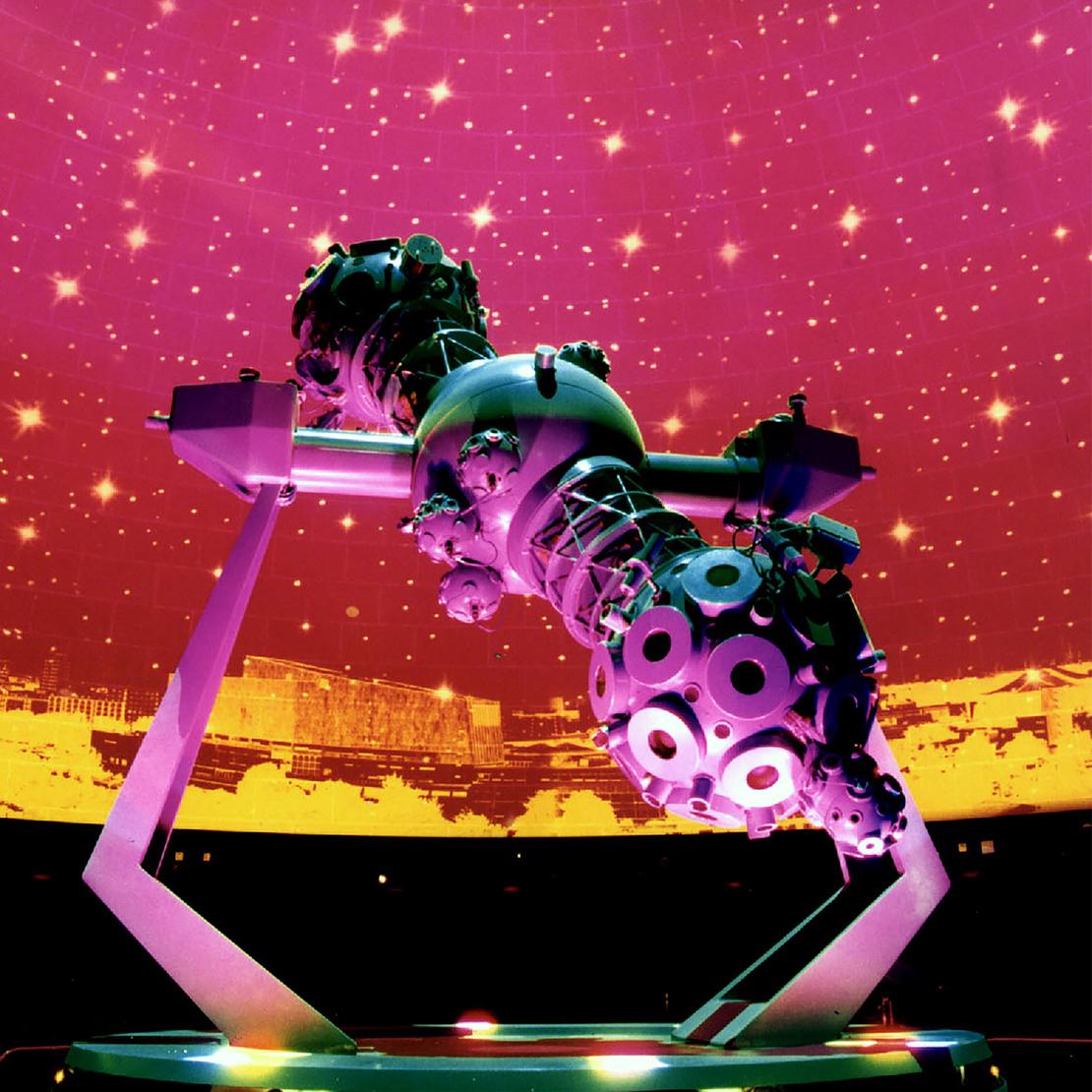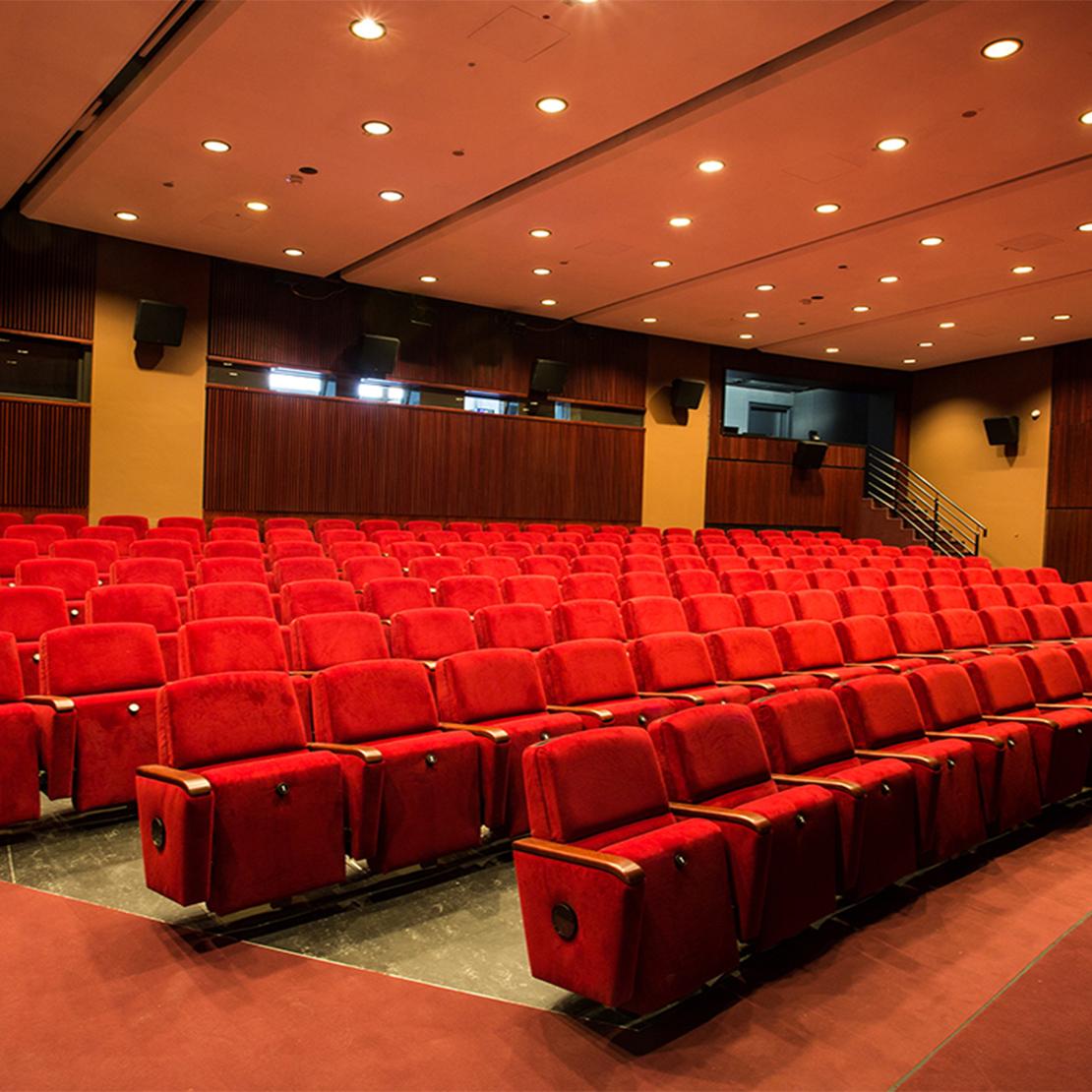
Planetarium
technology
Zeiss-Großplanetarium
Planetarium technology
Star projector: ZEISS UNIVERSARIUM Model IX
Since 2016, a ZEISS UNIVERSARIUM Model IX star projector has been the new centrepiece of the Zeiss-Großplanetarium. It was specially modified for the building and projects the night sky in natural brilliance onto the 23-metre-high dome. In addition, eight planet projectors show the movements of the planet stars in the firmament. The star projector is complemented by a multi-channel digital projection system with ten ZEISS VELVET video projectors for 360° full dome projection, creating a video image that fills the entire dome. The combination of the new star projector with a high-resolution full dome projection sets new technical and content standards throughout Europe. Visitors can not only see the stars from Earth, but also leave Earth and the solar system and embark on a three-dimensional journey through the universe. Computer animations provide insights into the birth and death of stars, three-dimensional flights enable the exploration of planetary surfaces and the collision of entire galaxies can be simulated in a time-lapse. The 3D software, which is based on astronomical databases, visualises the entire observable universe so that we can journey to the edge of the universe as we know it and vividly explain great astronomical ideas.
3D-Sound
The Spatial Sound Wave System provides an impressively spatial sound experience. 49 loudspeakers and 4 subwoofers in interaction with the newly installed full-dome projection system create impressive three-dimensional worlds for the eyes and ears.

Historical star projector: ZEISS COSMORAMA
The dumbbell-shaped Cosmorama star projector from Zeiss was the centrepiece of the Zeiss-Großplanetarium from its opening in 1987 until its modernisation in 2014. Today, it can be viewed in the foyer. The projector, which can be retracted into the floor, was able to display the starry sky in a lifelike manner, project all constellations pictorially into the dome and superimpose planets. The Cosmorama was one of the first computer-controlled projectors: it could be controlled manually via a control panel or fully automatically via a computer.
At the outer ends of the Cosmorama are two fixed star spheres, which project the northern and southern starry skies into the domed hall using a total of 32 projection lenses. The actual "stars" were created using perforated copper foils – each hole corresponds to a star of exactly the right brightness and in exactly the right position. In this way, a total of 9,200 artificial stars were superimposed on the domed sky. The smaller spheres have been used for the projection of the constellations. The lattice towers on which the fixed star spheres were mounted contained the projectors for the planets, the sun and the moon. Special gears made it possible to reproduce the planetary constellations with great accuracy. The large sphere in the centre of the Cosmorama housed the control motors that could rotate the device on three axes. There were also twelve panorama projectors under the base plate, which could be used to create various horizon panoramas, e.g. of cities, landscapes and other planets.

Modernisation 2014 - 2016
Between April 2014 and June 2016, extensive renovation and modernisation measures were carried out, making the Zeiss-Großplanetarium once again the most technically advanced star theatre in Europe. This was made possible by special funding from the State of Berlin and the European Regional Development Fund (ERDF). During this time, the Zeiss-Großplanetarium remained closed.
There were numerous renovations – from the entrance area to the projection dome. These included the removal of pollutants, the sound insulation of the dome, the installation of a new star projector and state-of-the-art digital projection technology, the renewal of the air conditioning system, the digitalisation of the cinema as well as the fire safety improvements and the renovation of the foyer.
Project sponsor
The State of Berlin provided the funds for the renewal of the media technology and the structural measures. The repair of the planetarium and the cinema seating as well as the renovation of the foyer area were financed by the European Union (European Regional Development Fund) and the State of Berlin.

Our project partners for the modernisation were:
Berliner Immobilienmanagement GmbH (BIM), DU Diederichs Projektmanagement AG & Co. KG and OBERMEYER Planen + Beraten GmbH
![]()
